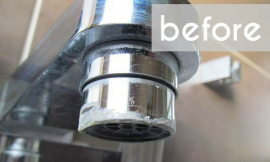
Did you know that nearly 66% of front-loading washing machine users report issues with mold or mildew? It's a common, yet preventable problem that can turn your laundry routine into a frustrating battle. As these modern appliances have gained popularity for their efficiency, they also come with a unique set of challenges. In this article, we'll explore why front-loading machines are prone to mold and share actionable tips to prevent it. Say goodbye to musty odors and hello to fresher laundry!
Understanding Mold Growth in Front-Loading Washers
How Mold Develops
When it comes to mold growth in front-loading washing machines, it's all about the conditions. These machines often have high humidity levels and a warm environment that's just right for mold spores to thrive. Additionally, if water remains trapped in certain parts of the washer after a cycle, it can create a breeding ground for unwanted mold.
Common Locations
There are specific areas in front-loading washers where mold tends to flourish. One of the most common spots is the door seal, which can trap moisture and create a moist environment. The detergent drawer is another hotspot, as leftover detergent and water can accumulate and lead to mold.
Key Factors Contributing to Mold in Front-Loading Washers
Moisture Retention
The unique design of front-loading washers allows for water to remain trapped in various parts of the machine. Even after a cycle is finished, moisture can linger, making it an ideal setting for mold to grow.
Detergent Choices
Not all detergents are created equal, and some can actually promote mold growth. Detergents containing high levels of surfactants or that are designed for cold cycles might not rinse out completely, leaving behind residues that can contribute to mold development.
Usage Patterns
Infrequent use of your washer can lead to stagnant water, which is another factor that facilitates mold growth. If the machine is not used regularly, water can sit in the drum, door seal, or drain, providing the perfect conditions for mold.
Signs Your Washing Machine Has a Mold Problem
Unpleasant Odors
One of the first signs of mold in your washing machine is an unpleasant smell. If your laundry starts coming out with a musty or mildew scent, it could be an indicator that mold is lurking inside.
Visible Mold
Physical signs of mold are another clear indicator that your washing machine might be affected. Look for black or green spots in the door seal, drum, and detergent drawer, as these can indicate active mold growth.
Staining on Clothes
If you notice dark stains on your freshly washed clothes, it could be due to mold. Mold spores can transfer from the washing machine to your garments, leaving behind unsightly marks.
Steps to Prevent Mold in Your Front-Loading Washer
Regular Cleaning
Consistent maintenance is key to preventing mold. Make it a point to clean your washing machine regularly, focusing on the door seal and drum, to remove any buildup of moisture or detergent.
Proper Ventilation
Improving air circulation around your washing machine can significantly minimize moisture retention. Ensure that your laundry area is well-ventilated to help keep humidity levels in check.
Using the Right Detergent
Opt for detergents that are specifically designed to combat mold or are low in surfactants. Look for products that are labeled as "mold-resistant" or "environmentally friendly," as they often contain fewer chemicals that can contribute to mold growth.
Maintenance Tips for Long-Term Prevention
Leaving the Door Open
A simple yet effective adjustment is to leave the washer door open after use. This encourages airflow, allowing any moisture to evaporate and significantly reducing the likelihood of mold growth.
Wiping Down Seal and Drum
Create a checklist for routine maintenance. Wipe down the door seal and drum after each use to eliminate any moisture that may have accumulated. Doing this weekly can help keep mold at bay.
Water Usage Adjustment
Fine-tuning your wash cycles can help limit water retention. Select shorter wash cycles or lower water levels when possible to minimize the amount of water that remains in the machine.
Professional Help and When to Seek It
Signs You Need Assistance
If you find that mold keeps returning despite your best efforts, it may be time to seek professional help. Other signs include persistent odors, visible mold that cannot be removed easily, or if your machine is experiencing operational issues.
Choosing a Professional
When it comes time to find a technician, look for professionals with good reviews and experience in servicing washing machines. A reliable technician will not only help eliminate existing mold but can also provide additional maintenance tips to prevent future growth.
Conclusion
In conclusion, understanding why front-loading washing machines are prone to mold is the first step towards prevention. By implementing the proper cleaning routines and maintenance practices, you can keep your machine fresh and your laundry smelling great. Don’t let mold ruin your laundry day—start taking action today!






